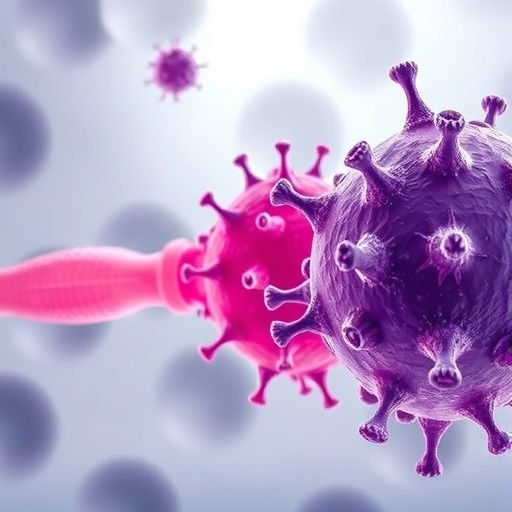In a groundbreaking study that unravels the intricate regulatory mechanisms underlying cellular metabolism, researchers have illuminated a sophisticated interaction between metabolite transporters that orchestrates glucose uptake and exometabolite fluxes to optimize bioenergetic efficiency. This discovery redefines our understanding of metabolic coordination within cells, highlighting a finely-tuned balance that governs energy production and metabolite exchange, essential for cellular adaptation and function.
Metabolism, the foundation of cellular life, depends heavily on the movement of substrates and products across cellular membranes. While glucose has long been recognized as a primary energy source fueling cellular processes, the regulation of its transport and subsequent metabolism has remained only partially understood. The current research, spearheaded by Yehoshua et al., delves into the dynamic crosstalk between membrane transporters that not only facilitates glucose uptake but also modulates the flux of exometabolites—metabolites released or taken up from the extracellular environment—thereby influencing the cell’s bioenergetic landscape.
Central to this study is the revelation that metabolite transporters do not operate in isolation. Instead, they engage in regulatory interactions that synchronize their activity to maintain an optimal balance between the uptake of glucose and the exchange of exometabolites. This coordinated function ensures that the bioenergetic demands of the cell are met efficiently and that metabolic intermediates are appropriately channeled to support diverse physiological processes, including energy generation, biosynthesis, and redox homeostasis.
.adsslot_hDUl0Bdixp{ width:728px !important; height:90px !important; }
@media (max-width:1199px) { .adsslot_hDUl0Bdixp{ width:468px !important; height:60px !important; } }
@media (max-width:767px) { .adsslot_hDUl0Bdixp{ width:320px !important; height:50px !important; } }
ADVERTISEMENT
The investigation employed an array of advanced biochemical assays combined with cutting-edge flux analysis to capture the real-time dynamics of transporter activity and metabolite movement. By tracing labeled substrates, the team mapped out the fluxes of glucose and key exometabolites such as lactate, pyruvate, and others, revealing an interconnected network where alterations in one transporter’s activity elicited compensatory or regulatory adjustments in others. This phenomenon demonstrates a previously unappreciated layer of metabolic regulation, emphasizing that transporter proteins act as integrated components of a broader regulatory system rather than as individual conduits.
One of the critical insights from the study is the role of glucose transporters (GLUTs) in modulating extracellular metabolite exchange. Traditionally recognized solely for facilitating glucose import, these transporters were shown to influence, and be influenced by, the activity of exometabolite transporters. This bidirectional regulatory interaction establishes a feedback mechanism that ensures the tuning of metabolite fluxes in response to cellular energy needs and extracellular conditions.
Intriguingly, perturbations introduced in one transporter led to a cascade of metabolic adjustments, underpinning the system’s robustness and plasticity. The researchers demonstrated that when glucose transport was impeded, the cellular machinery compensated through enhanced uptake or release of other metabolites, ensuring sustained energy supply and metabolic equilibrium. This adaptability highlights the cell’s capacity to remodel its metabolic networks dynamically and maintain homeostasis under fluctuating environmental or internal conditions.
The implications of these findings reach far beyond basic cell biology. Understanding how cells regulate metabolite fluxes has profound relevance in pathological states such as cancer, where metabolic reprogramming is a hallmark. Tumor cells often display altered glucose and lactate transport, enabling them to thrive under hypoxic conditions and support rapid proliferation. The newly characterized regulatory interactions provide potential targets for therapeutic intervention aimed at disrupting metabolic symbiosis within the tumor microenvironment.
Moreover, the study opens new avenues for exploring metabolic coordination in tissues with high energetic demands, such as brain and muscle, where efficient substrate utilization and waste removal are pivotal. The elucidation of transporter networks and their regulatory crosstalk may inform strategies to combat metabolic disorders including diabetes and neurodegenerative diseases, where dysregulation of metabolite handling contributes to disease progression.
On a molecular level, the authors uncovered signaling pathways and post-translational modifications that appear to mediate the communication between different transporters. These regulatory nodes might act as metabolic sensors, detecting intracellular and extracellular cues and adjusting transporter activities accordingly. This level of control underscores the complexity of cellular metabolism and the necessity of integrated regulatory systems to sustain life.
Technological advancements played a crucial role in enabling these discoveries. High-resolution metabolomics, combined with live-cell imaging and genetic manipulation, allowed the dissection of transporter function within native cellular contexts. Such integrative approaches represent a significant leap forward in our capacity to model and understand metabolism as a system rather than isolated biochemical reactions.
Importantly, this research challenges the classical view that sees transporter proteins as passive facilitated diffusion channels. Instead, transporters have emerged as active participants in metabolic regulation, capable of sensing changes and engaging in cross-talk that modulates overall metabolic fluxes, revealing a paradigm shift in the conception of cellular bioenergetics.
From a physiological standpoint, this regulatory interaction model provides insights into how cells prioritize substrate utilization during metabolic stress or nutrient scarcity. The balance between glucose uptake and the handling of exometabolites ensures that essential bioenergetic pathways remain operational, supporting cell survival and function under extreme or changing environmental conditions.
Furthermore, the findings suggest that metabolic networks encompass not only enzyme-mediated reactions but also the dynamic and coordinated activity of transporter proteins. This expanded framework offers a holistic view of cellular metabolism, where membrane transport is integral to metabolic precision and adaptability.
Future directions stemming from this work may involve exploring the impact of aging and disease on transporter regulatory interactions, as well as potential pharmacological modulation to restore metabolic balance. The identification of small molecules or biologics that influence transporter crosstalk could revolutionize treatments aimed at metabolic dysfunction.
Overall, Yehoshua and colleagues have provided an elegant and compelling portrait of the metabolic cell as a sophisticated regulatory unit, where transporter proteins act in harmony to navigate the complex terrain of energy flux and metabolite management. This work will undoubtedly serve as a cornerstone for further metabolic research and inspire innovative therapeutic strategies that harness the power of transporter coordination.
The integration of glucose and exometabolite fluxes elucidated in this study reshapes our understanding of bioenergetics, revealing a system finely balanced to meet cellular demands efficiently. Such insights enrich the landscape of metabolic biology and highlight the intricate choreography of molecules working in concert to sustain life’s fundamental processes.
Subject of Research: Regulatory interactions between metabolite transporters coordinating glucose uptake and exometabolite fluxes to drive cellular bioenergetics.
Article Title: Regulatory interaction between metabolite transporters coordinates glucose and exometabolite fluxes to drive bioenergetics.
Article References:
Yehoshua, N., Khamaysi, A., Shimshilashvili, L. et al. Regulatory interaction between metabolite transporters coordinates glucose and exometabolite fluxes to drive bioenergetics. Nat Commun 16, 6819 (2025). https://doi.org/10.1038/s41467-025-62103-3
Image Credits: AI Generated
Tags: bioenergetic efficiency in cellscellular adaptation through metabolite exchangecoordination of metabolic processescrosstalk between glucose and exometabolitesexometabolite flux and energy productionglucose metabolism and transport regulationimplications of metabolite transport on cellular functioninteraction of membrane transporters in metabolismmetabolite transporters and glucose uptakeoptimization of energy fluxes in cellsregulatory mechanisms of cellular metabolismunderstanding cellular bioenergetics





